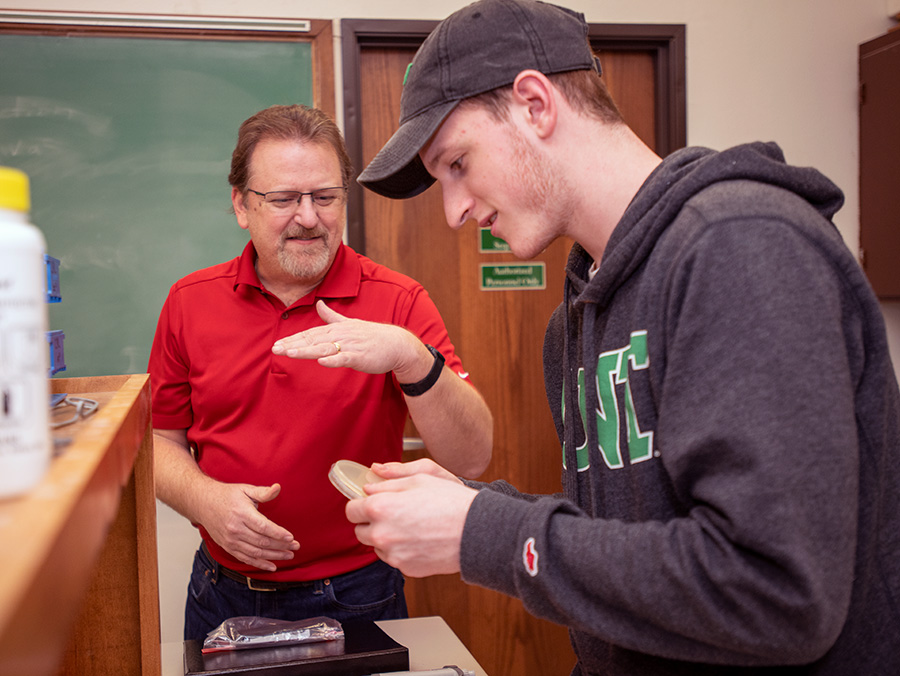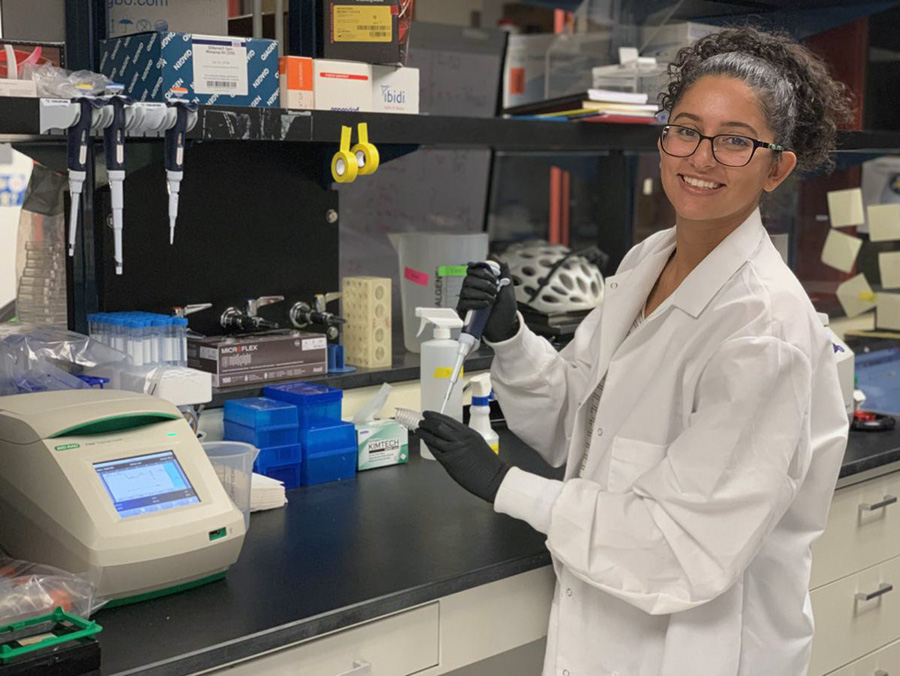The biology course led Isabel Delwel ('18) down a path in the sciences. Following her participation in the PHAGES program,
she took part in the prestigious Ronald E. McNair Scholars Program, was selected as one of 67 students in the U.S. for the Howard Hughes Medical Institute
Exceptional Research Opportunities Program, spent a summer in Seattle working at Fred
Hutchinson Cancer Research and became a full-time researcher at the Albert Einstein
College of Medicine. Recently, she started a Ph.D. in microbiology and immunology
at Stanford University.
"The PHAGES program really gave me exactly what it's supposed to -- a good introduction
into research. I got to see one small, full circle about how research could be integrated
into adding knowledge to science," Delwel says.
From the beginning, Hughes and his former PHAGES co-director Bob Benjamin wanted to
give undergraduates an opportunity to participate in research from day one of their
college career, plus introduce them to the scientific way of thinking in a project
that leads to real science data rather than a cookbook experiment where the professor
tells you the result.
"If it fails and things don't work, they have to try it again,"Hughes says. "They
learn to troubleshoot their work. It's all the things a real scientist does."
Freshman Jack Laub-Tracy learned the art of trial and error and patience last fall in the PHAGES program.
Nearly a month into the class,Laub-Tracy still hadn't isolated a virus from the soil
he collected.
"You think it should be easy to find something that's everywhere," he says. "I'm determined."
Once students do find a virus from their soil sample, they must purify it in order
to extract its DNA.
At the end of the first semester, Hughes sends some bacteriophages for DNA sequencing.
Students then spend the entirety of the second semester studying all the genes in
the viruses using a variety of methods from biology, computer science, information
engineering,mathematics and statistics known as bioinformatics to interpret the data.
The resulting DNA sequencing annotation for the bacteriophages are uploaded to GenBank,
giving students authorship on a scientific resource. Some students also become co-authors
on research papers that use data collected from the PHAGES program, including a 2015
paper published in the journal eLife that chronicles all the findings up to that point from UNT and the dozens of other
schools that participate in the program.
To date, UNT students have added 508 bacteriophages to the SEA-PHAGES database, and
136 of those also have been published in the international GenBank database.
For those students wanting to take an even deeper dive intobacteriophages, Hughes
selects four to six undergraduates each semester to build upon the work from the biology
classes in his lab.
Senior and PHAGES alum Brendan Frederick has been working in Hughes' lab to further study bacteriophages identified in the
course.
"A lot of the stuff we did in the lab, it's ended up following me in my upper level
courses," Frederick says. "I'm still learning a lot from the research I did and am
continuing to do."
Both Schade and Delwel also spent time working in Hughes lab while at UNT. Now, they
both dream of starting their own labs where they can inspire the next generation of
researchers.
"Aside from the science, Dr. Hughes showed me that you have the power to guide someone
to where they want to go," Delwel says. "That was influential for me. I want to help
provide opportunity and access to others through my own lab."

